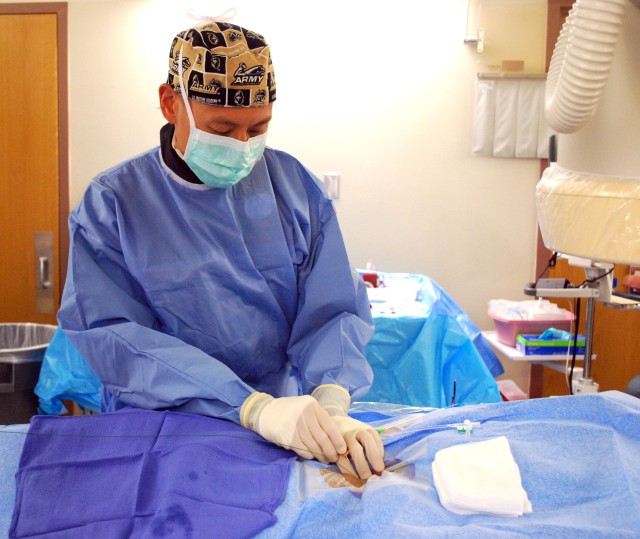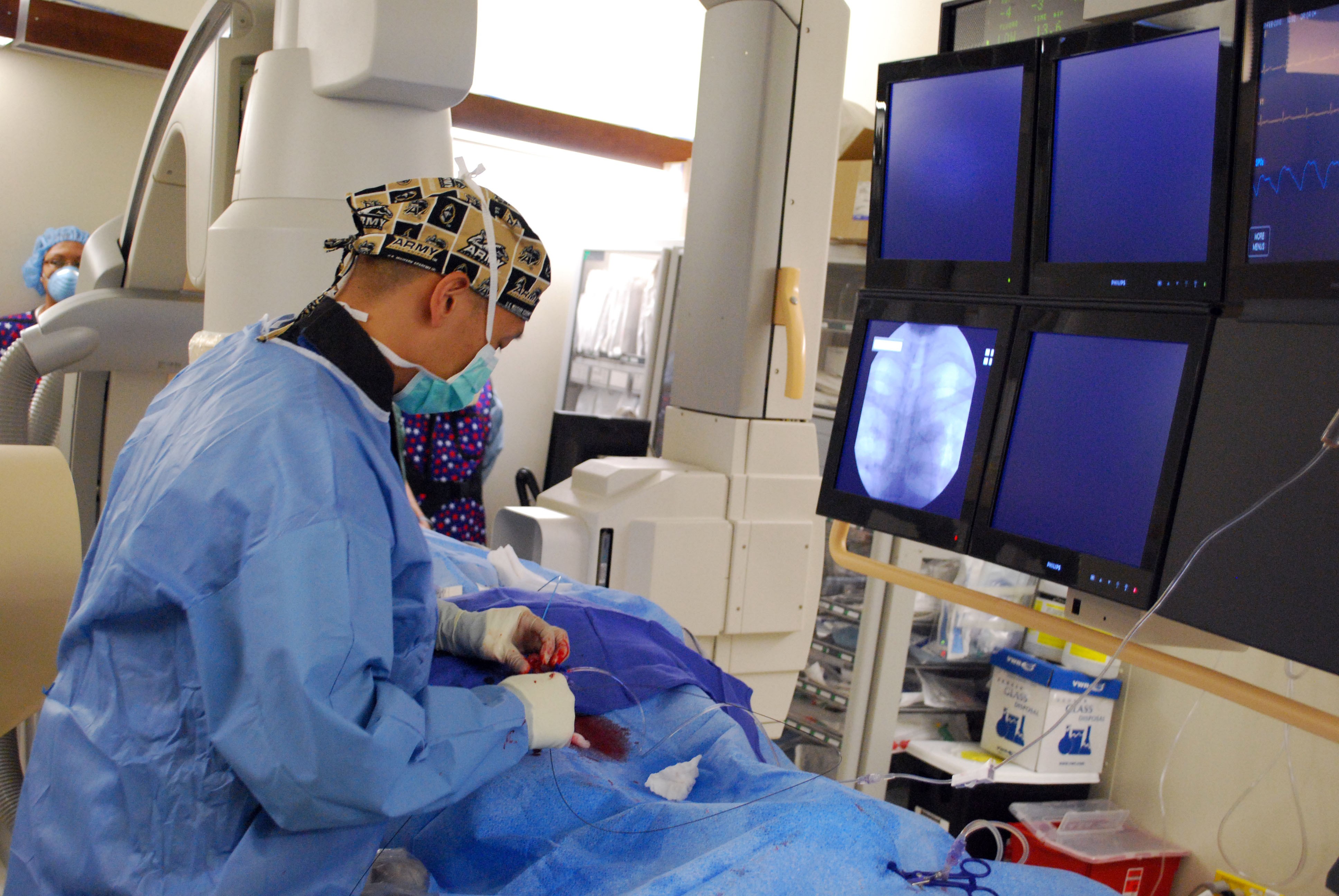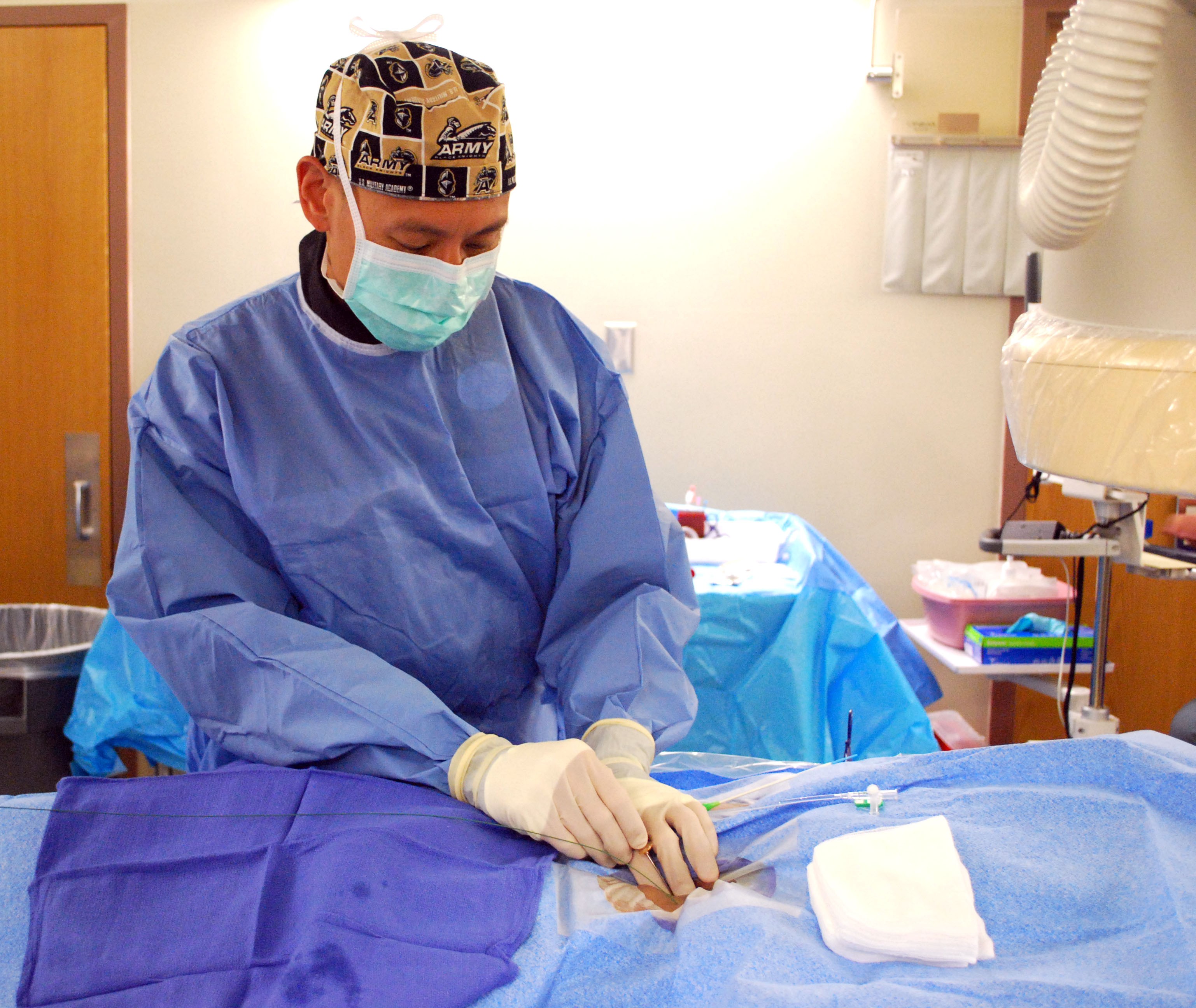Maj. (Dr.) Yince Loh is as unique a Soldier as they come. He is only one of two interventional neuroradiologists in the Army. He\'s one of three Soldiers who specialize in neurocritical care. He's the only one certified in both. And to top it off, he's a Ranger-qualified prior doctor for the Special Forces. His office is non-descript, yet there is a rare sight tucked next to his desk at Madigan Army Medical Center - a ruck sack - a remnant of the life he had for three years as the surgeon for 1st Brigade, 1st Special Forces Group in Okinawa, Japan. The assumption is that someone with as much medical experience as Loh would avoid most aspects of the Army experience. Yet Loh, from Los Angeles, is a jumpmaster with more than 50 airborne jumps, a six-month deployment last year to Afghanistan with the 3rd Battalion, 509th Parachute Infantry Regiment, and has nearly every advanced school the Army offers, including Ranger, flight surgery, air assault, and scuba/diving medical officer's schools; even Jumpmaster school in Thailand. Loh is well aware of what his medical background can earn him in civilian medicine - not uncommonly a million dollars, starting. There are about 300 doctors specializing in interventional neuroradiology in the United States. But he doesn't do things conventionally - which ties in well with his medical and military resume. "My mentor (the other Army interventional neuroradiologist and a neurosurgeon) always called [interventional neuroradiology] the Special Forces of medicine," Loh said. "What we do is unconventional and we cover the brain which is very serious real estate, posing high risks, but sometimes the only way to save the brain or even life." After leaving the jungles of Southeast Asia searching for human terrorists about eight years ago, Loh now spends his time combating microscopic terrorists - those that block arteries or cause strokes. With his two hats in interventional neuroradiology, or neurointerventional surgery (as the specialty was renamed in 2007), and neurocritical care, Loh uses catheters inserted from the groin and fed through the body to the brain, neck or spine to implant tools like glue or coils, to block arteries or blood vessel abnormalities. Putting in catheters at the groin is minimally invasive and safe, he said. Loh can also stent blood vessel narrowings or pull blood clots to reduce or even eliminate the effects of a stroke. Stenting is emplacing a pre-formed metal tube into a blood vessel that will open the artery wall to increase blood flow. He can treat many different types of issues centered around the brain, but the majority of the patients he sees have acute ischemic stroke (from artery blockage or narrowing of the artery). Got a chronic nose bleed condition' Loh can block the arteries causing that. The neurology service needed some help at first figuring out how to use him. When he first started at Madigan, he filled in as a general neurologist until he could start his own education campaign about the many types of procedures he was capable of performing. The senior leadership fully supported Madigan's expansion into Loh's specialty when they understood what services he could provide Madigan and the Western Regional Medical Command. "I found a niche for what I can do while still supporting the Madigan mission to see the neurology patients," Loh said. Loh believes Madigan is a great place for him to work because of the camaraderie and the support he receives from so many other services. "I could never do what I do without the great care the radiologists, vascular surgeons, Intensive Care Unit doctors, anesthesiologists, neurologists and neurosurgeons bring to the table," Loh said. Many advantages exist for those who want to use Loh's interventional services. For example, most procedures can be performed on an outpatient basis; general anesthesia usually is not required and recovery time is faster. In 20 to 30 years, Loh said he believes that there will be less need to open skulls for many of the neurosurgical operations performed today. Besides patients, the doctor spends a good deal of time training neurology and radiology residents. While at Madigan, only one resident has shown any real interest in becoming a critical care neurologist. Loh understands that, as he had about seven more years of schooling and resident time beyond becoming a doctor. "Luckily, I wasn't 40 when I finished my fellowship," he joked. It's fitting that to earn such a long job title would take a long time. Loh finished his internship at Walter Reed Army Medical Center, and then went overseas to serve with a Special Forces battalion. He then came back to Walter Reed to finish his residency to become a neurologist, where he studied neurosurgery, neurocritical care and diagnostic neuroradiology - all pre-requisites to becoming a neurointerventional surgeon. Then, he was off to fellowship - first in neurocritical care and then in interventional neuroradiology. He became a fully-certified neurointensivist and interventional neuroradiologist after spending three years at the UCLA Medical Center. Loh's love for the Army has kept him to continue raising his right hand, extending his commission. "Who else gets to jump out of planes, scuba-dive, see almost all of Southeast Asia, deploy to Afghanistan; no one gets this opportunity outside the Army," he said. When he is in situations or places where his neurointerventional skills can't play a role, he looks at other military talents to improve. For example, while deployed to Afghanistan, Loh spent a great deal of time training medics, conducting mass casualty scenarios and just being a general medical officer; a major more than a doctor. "I always loved going to the field in ROTC, wearing green, humping the ruck; it was a cool part of my life."
Madigan doctor one of only two Army neurointerventional surgeons
By Mr. Lorin Smith (I Corps)February 16, 2010




Social Sharing